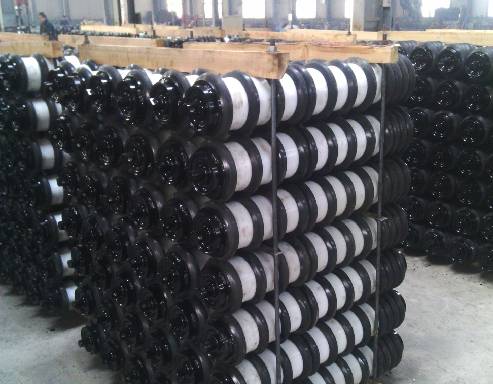 Afrikaans
Afrikaans  Albanian
Albanian  Amharic
Amharic  Arabic
Arabic  Armenian
Armenian  Azerbaijani
Azerbaijani  Basque
Basque  Belarusian
Belarusian  Bengali
Bengali  Bosnian
Bosnian  Bulgarian
Bulgarian  Catalan
Catalan  Cebuano
Cebuano  Corsican
Corsican  Croatian
Croatian  Czech
Czech  Danish
Danish  Dutch
Dutch  English
English  Esperanto
Esperanto  Estonian
Estonian  Finnish
Finnish  French
French  Frisian
Frisian  Galician
Galician  Georgian
Georgian  German
German  Greek
Greek  Gujarati
Gujarati  Haitian Creole
Haitian Creole  hausa
hausa  hawaiian
hawaiian  Hebrew
Hebrew  Hindi
Hindi  Miao
Miao  Hungarian
Hungarian  Icelandic
Icelandic  igbo
igbo  Indonesian
Indonesian  irish
irish  Italian
Italian  Japanese
Japanese  Javanese
Javanese  Kannada
Kannada  kazakh
kazakh  Khmer
Khmer  Rwandese
Rwandese  Korean
Korean  Kurdish
Kurdish  Kyrgyz
Kyrgyz  Lao
Lao  Latin
Latin  Latvian
Latvian  Lithuanian
Lithuanian  Luxembourgish
Luxembourgish  Macedonian
Macedonian  Malgashi
Malgashi  Malay
Malay  Malayalam
Malayalam  Maltese
Maltese  Maori
Maori  Marathi
Marathi  Mongolian
Mongolian  Myanmar
Myanmar  Nepali
Nepali  Norwegian
Norwegian  Norwegian
Norwegian  Occitan
Occitan  Pashto
Pashto  Persian
Persian  Polish
Polish  Portuguese
Portuguese  Punjabi
Punjabi  Romanian
Romanian  Russian
Russian  Samoan
Samoan  Scottish Gaelic
Scottish Gaelic  Serbian
Serbian  Sesotho
Sesotho  Shona
Shona  Sindhi
Sindhi  Sinhala
Sinhala  Slovak
Slovak  Slovenian
Slovenian  Somali
Somali  Spanish
Spanish  Sundanese
Sundanese  Swahili
Swahili  Swedish
Swedish  Tagalog
Tagalog  Tajik
Tajik  Tamil
Tamil  Tatar
Tatar  Telugu
Telugu  Thai
Thai  Turkish
Turkish  Turkmen
Turkmen  Ukrainian
Ukrainian  Urdu
Urdu  Uighur
Uighur  Uzbek
Uzbek  Vietnamese
Vietnamese  Welsh
Welsh  Bantu
Bantu  Yiddish
Yiddish  Yoruba
Yoruba  Zulu
Zulu conveyor brackets
Understanding Conveyor Brackets Essential Components for Efficient Conveying Systems
Conveyor brackets play a crucial role in the functionality and efficiency of conveyor systems. These components are designed to support, stabilize, and secure conveyor belts and their associated parts, ensuring smooth operation within various industrial environments. As industries increasingly rely on automated systems for transporting materials, the importance of reliable conveyor brackets cannot be overstated.
What are Conveyor Brackets?
Conveyor brackets are structural supports that hold conveyor belts and other related components in place. They can be made from various materials, including steel, aluminum, and plastic, depending on the specific requirements of the application. These brackets can be fixed or adjustable, allowing for flexibility in installation and maintenance. Their primary function is to provide the necessary support to the conveyor system, preventing sagging or misalignment during operation.
Types of Conveyor Brackets
There are several types of conveyor brackets, each designed for specific applications. Some common types include
1. Mounting Brackets These are used to attach conveyor components to the frame or support structure. They can come in various shapes and sizes, depending on the design of the conveyor system.
2. Idler Brackets These brackets support idler rollers, which help maintain the tension and alignment of the conveyor belt. Idler brackets are essential for ensuring the smooth movement of materials along the conveyor.
conveyor brackets

4. Framework Brackets These are part of the overall structure that holds the conveyor system together, providing stability and strength to the entire setup.
Importance of Quality Conveyor Brackets
Selecting high-quality conveyor brackets is essential for the longevity and reliability of a conveyor system. Low-quality brackets can lead to frequent failures, downtime, and increased maintenance costs, affecting overall productivity. Investing in durable materials and precision engineering ensures that the brackets will withstand the rigors of industrial use, including heavy loads and continuous operation.
Installation and Maintenance
Proper installation of conveyor brackets is vital for the optimal performance of a conveyor system. They must be aligned correctly to avoid any misalignment of the conveyor belt, which can cause wear and tear over time. Regular maintenance checks are also necessary to identify any signs of wear or damage. By ensuring that the brackets are in good condition, businesses can avoid costly repairs and extend the life of their conveyor systems.
Conclusion
In summary, conveyor brackets are essential components that contribute significantly to the efficiency and reliability of conveyor systems. By understanding their types, importance, and maintenance needs, businesses can make informed decisions when selecting and maintaining these critical parts. As industries continue to evolve and demand more efficient material handling solutions, the role of conveyor brackets will remain integral to successful operations. Whether in manufacturing, packaging, or distribution, investing in high-quality conveyor brackets is a step toward enhancing productivity and minimizing operational disruptions.
-
Revolutionizing Conveyor Reliability with Advanced Rubber Lagging PulleysNewsJul.22,2025
-
Powering Precision and Durability with Expert Manufacturers of Conveyor ComponentsNewsJul.22,2025
-
Optimizing Conveyor Systems with Advanced Conveyor AccessoriesNewsJul.22,2025
-
Maximize Conveyor Efficiency with Quality Conveyor Idler PulleysNewsJul.22,2025
-
Future-Proof Your Conveyor System with High-Performance Polyurethane RollerNewsJul.22,2025
-
Driving Efficiency Forward with Quality Idlers and RollersNewsJul.22,2025





























